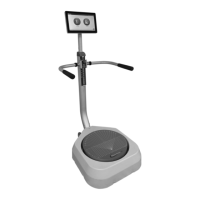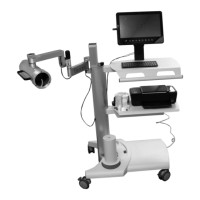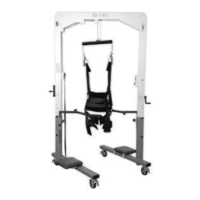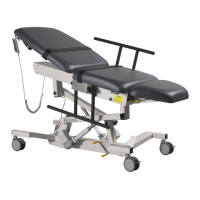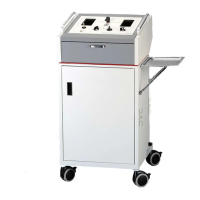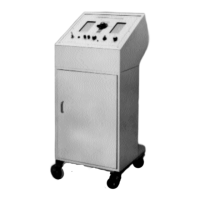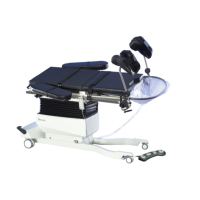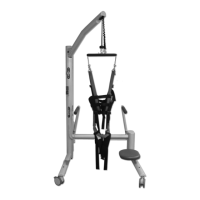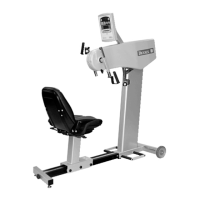Do you have a question about the biodex BALANCE SYSTEM SD and is the answer not in the manual?
Visual overview of the Balance System SD's main components and adjustment mechanisms.
Detailed dimensions, operating capabilities, and system requirements of the Balance System SD.
Lists compatible printers, pointing devices, and keyboards for the system.
Step-by-step instructions for connecting and installing the printer.
Procedures for adjusting support handles, display height, and tilt for patient use.
Essential clinical guidelines for safe and effective patient operation of the balance system.
Specific considerations for using the system in fall prevention programs.
How the Balance System SD is applied in orthopedic and sports medicine contexts.
Applications for fall prevention testing and the CTSIB protocol.
Explanation of on-screen keys and navigation within the system's main menu.
Introduction to the six interactive training modes provided by the system.
Detailed steps for performing the Postural Stability training mode.
Instructions for setting up and executing the Limits of Stability training.
Procedures for conducting Weight Shift training exercises and interpreting results.
Step-by-step guide for performing Maze Control training sessions.
How to perform Random Control training, including target modification.
Real-time feedback for % weight-bearing goals and movement.
Creating, saving, and recalling custom test and training protocols.
Introduction to various assessment tests including Postural Stability and CTSIB.
Detailed instructions for administering the Postural Stability test.
Procedures for conducting the LOS test and interpreting its indicators.
Guide for performing single leg stability tests on athletes.
Steps to conduct the Fall Risk assessment and compare results to normative data.
Explanation and protocol for the CTSIB test to assess sensory integration.
Explains key metrics like Stability Level, OSI, AP/ML Index used in reports.
Examples of various balance test reports generated by the system.
Instructions for printing and viewing progress reports for patient tracking.
Understanding how to assess Limits of Stability using the system.
Guidance on understanding Stability Index, Zone/Quadrant time, and Test Grid.
Configuring screen timeouts, savers, date/time, and system defaults.
Managing patient records, test sessions, and data export/deletion.
List of ICD-9 codes for physician referrals related to balance issues.
CPT codes for services provided using the balance system.
Instructions for cleaning surfaces and lubricating mechanical parts.
Formula for calculating the Direction Control Score in LOS testing.
Explanation of the equation used to determine the CTSIB Sway Index.
Presentation of normative data for stability index differences among age groups.
Information on CTSIB data collection, reliability, and sway index ranges.
General concepts of postural balance and movement strategies.
How visual, vestibular, and somatosensory systems contribute to balance.
How to interpret CTSIB results and identify sensory integration deficits.
System's adherence to safety standards for electromagnetic compatibility.
Statement of conformity for emissions and immunity according to EMC regulations.
Instructions for cleaning and performing general maintenance on the system.
A bibliography of research papers and studies related to balance testing.
Illustrated diagrams detailing replacement parts for the Balance System SD.
Electrical block diagram showing system interconnections and components.
| Type | Balance Assessment and Training System |
|---|---|
| Category | Medical Equipment |
| Data Sampling Rate | 100 Hz |
| Weight Capacity | 400 lb (181 kg) |
| Power Requirements | 100-240 VAC, 50/60 Hz |
| Display | Touchscreen Color LCD |
| Software | Biodex Balance System Software |
| Modes | Static, Dynamic |
| Assessment Protocols | Fall Risk |
| Training Modes | Weight Shift |
| Data Analysis | Real-time feedback and comprehensive reporting |
| Patient Database | Yes |
| Reports | Customizable reports |
| Tilting Range | 20 degrees |
